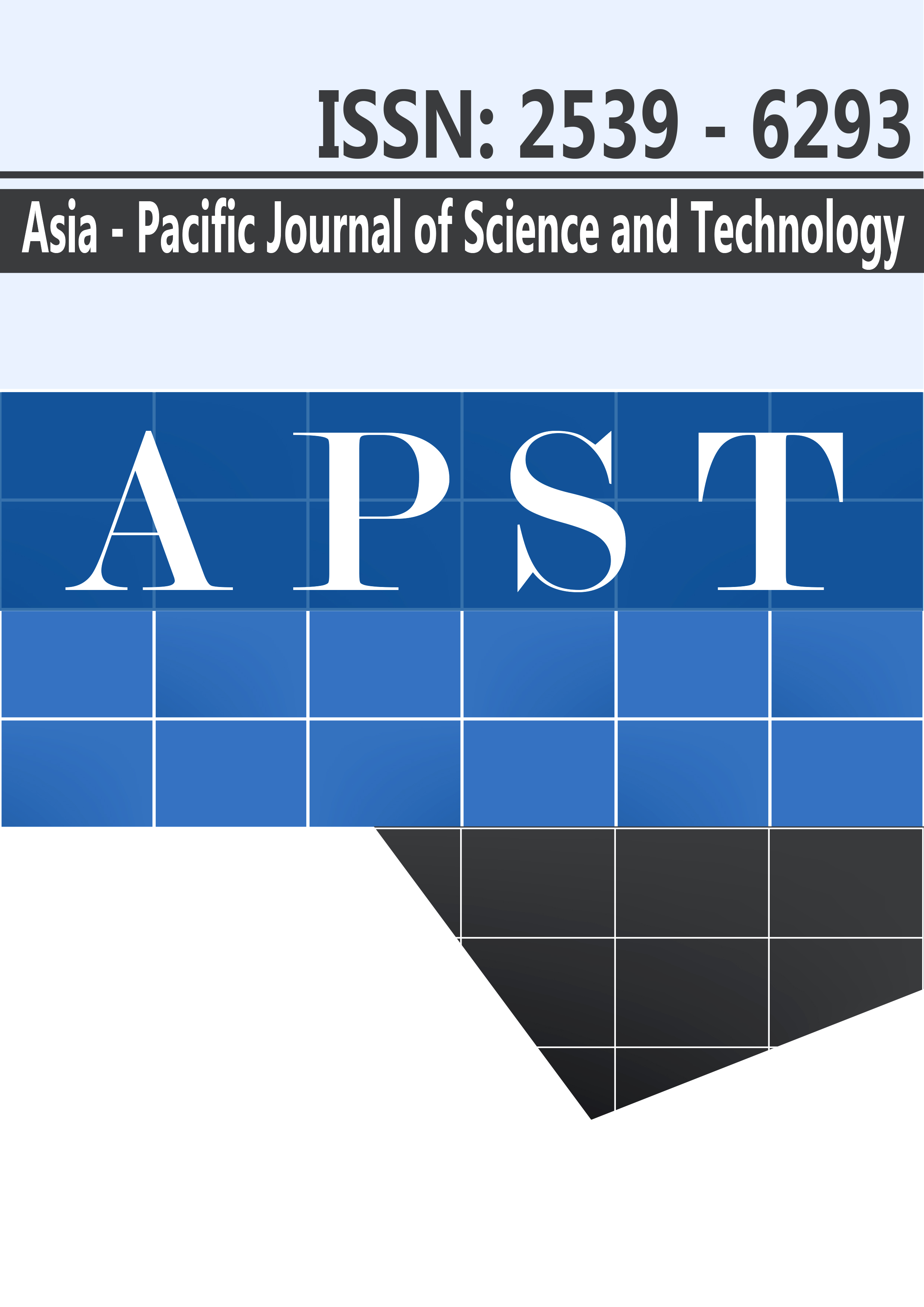Monitoring of pesticide residues in domestic vegetables in Thailand during 2015
Main Article Content
Abstract
In Thailand, the Ministry of Public Health has the responsibility for regulatory monitoring safety of food. To assess the residue levels and to evaluate the exposure of the Thai population to pesticides, a nationwide surveillance program for pesticide residues in vegetables has been performed during 2015. A total of 934 samples of four types of vegetables including Chinese broccoli, ivy gourd, yardlong bean and water spinach were collected from wholesale markets by 77 Provincials Public Health Offices in collaboration with 14 Regional Medical Sciences Centers. All samples were sent to the accredited laboratory of the Bureau of Quality and Safety of Food and were examined for residues of 60 pesticides, including 20 organochlorines, 23 organophosphorus, 8 synthetic pyrethroids, 7 carbamates and 2 fungicides using multi-residue extraction and chromatography method. Predominantly, 22.3% of the samples had detectable pesticide residues at levels ranging from <0.01 to 5.9 mg/kg. Of the contaminated samples, the levels of 33.9, 31.9, 10.6 and 9.5% of the samples were pesticides detectable in yardlong bean, Chinese broccoli, ivy gourd and water spinach, respectively. The results showed a potential human dietary risk related to consumption of these vegetables. Governmental action plans should be developed with the cooperation of producers to reduce pesticide residues.
Article Details
References
(1) Salem H, Olajos EJ. Review of pesticides: chemistry, uses and toxicology. Toxicology and Industrial Health 1988;4:291-321.
(2) Panuwet P, Siripong W, Prapamontol T, Ryan PR, Fledler N, Robson MG, Barr DB.
Agricultural pesticide management in Thailand: situation and population health risk. Environ Sci Policy 2012;17:72-8.
(3) Chomchalow N, Somsri S, Na Songkhla P. Marketing and Export of Major Tropical Fruits from Thailand. AU J.T. 2008;11(3):133-143.
(4) Pongpanich C, Phitya-Isarakul P. Enhancing the Competitiveness of Thai Fruit Exports: an Empirical Study in China. Contemporary Management Research 2008;4(1):15-28.
(5) Harnpicharnchai K, Chaiear N, Charerntanyarak L. Residues of organophosphate
pesticides used in vegetable cultivation in ambient air, surface water and soil in
Bueng Niam Subdistrict, Khon Kaen, Thailand. The Southeast Asian Journal of
Tropical Medicine and Public Health 2013;44:1088-1097.
(6) Atisook K, Lertreungdej Y, Suntudrob J, Jongmevasna W, Payanan T, Kaunha C, Srikote R. Total Diet Study on Pesticide Residues in Thai Diet, 1999-2003. Bull Dept Med Sci 2008;50(3):151-162.
(7) Darko G, Acquaah SO. Level of organochlorine pesticides residues in meet. Int J Environ Sci Tech 2007;4:521-524.
(8) Sass J, Janssen S. Open letter to Stephen Johnson, Administrator, U.S. Environmental Protection Agency: ban endosulfan. Int J Occup Environ Health. 2008;14(3):236-239.
(9) Robin S, Raghavan SC. Induction of DNA damage and erroneous repair can explain genomic instability caused by endosulfa.. Carcinogenesis. 2016;37(10):929-940.
(10) Grunfeld HT, Bonefeld-Jorgensen EC. Effect of in vitro estrogenic pesticides on human oestrogen receptor alpha and beta mRNA levels. Toxicol. Lett. 2004;151(3):467-480.
(11) Ibarluzea JJ, Fernandez MF, Santa-Marina L, et al. Breast cancer risk and the combined effect of environmental estrogens. Cancer Causes Control 2004;15(6):591-600.
(12) Singh S, Singh N, Kumar V, Datta S, Basit A, et al. Toxicity, monitoring and biodegradation of the fungicide carbendazim. Environmental Chemistry Letters 2016;14(3):317-329.
(13) Juajun1 O, Vanhanen L, Sangketkit1 C, Savage G. Effect of Cooking on the Oxalate Content of Selected Thai Vegetables. Food and Nutrition Sciences 2012;3:1631-1635.
(14) General guideline for sampling CAC/GL 50-2004. Available at http://www.fao.org/uploads/media/Codex_2004_sampling_CAC_GL_50.pdf (accessed on 23 February 2017).
(15) Anastassiades M, Lehotay SJ, Stajnbaher D, Schenck FJ. Fast and easy multiresidue
method employing acetonitrile extraction/partitioning and “dispersive solid-phase extraction” for the determination of pesticide residues in produce. Journal of AOAC International 2003;86:412-431.
(16) Payanan T, Suntudrop J, Jongmevasna W, Srikote R, Wittayanan W. Study of Pesticide Residues in Oranges. Bull Dept Med Sci 2015;57(4):391-400.
(17) Suntudrob J Atisook K. Method validation for determination of fungicides in vegetables and fruits. Bull Dept Med Sci 2005;47(1):26-36.
(18) Sapbamrer R, Nata S. Health symptoms related to pesticide exposure and agricultural tasks among rice farmers from Northern Thailand. Environmental Health and Preventive Medicine 2014;19:12-20.
(19) Stephenson RR. Aquatic toxicology of cypermethrin. I. Acute toxicity to some freshwater fish and invertebrates in laboratory tests. Aquatic Toxicology 1982;2(3):175-185.
(20) Yenjerla M, Cox C, Wilson L, Jordan MA. Carbendazim Inhibits Cancer Cell Proliferation by Suppressing Microtubule Dynamics. Journal of Pharmacology and Experimental Therapeutics 2009;328(2):390-398.
(21) Garner F, Jones K. Biological monitoring for exposure to methamidophos: A human oral dosing study. Toxicology Letters 2014;231(2):277-281.


